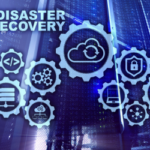Data is the lifeblood of successful government grant administration. U.S. agencies face a growing challenge of maintaining impeccable data quality and consistency across complex systems, while meeting ever-increasing reporting demands. This article delves into the critical role of data quality in grant management, explores the current challenges, and outlines advanced testing strategies for achieving data integrity.
The Data Integrity Dilemma: Challenges and Consequences
Grant management systems juggle an immense volume of data from diverse sources, including applicant information, financial records, and compliance reports. Here’s where the challenges arise:
- Data Silos: Fragmented data storage across multiple departmental systems creates isolated islands of information, hindering a holistic view and hindering data analysis.
- Data Integrity Issues: Inconsistent data formats, outdated information, and duplicate records plague systems, compromising data trustworthiness.
- Reporting Burdens: Federal agencies must comply with rigorous reporting standards like those mandated by the Office of Management and Budget (OMB). Inaccurate or unreliable data throws a wrench into these processes.
A prime example is the U.S. Department of Education‘s grant management system, which faced criticism for data inconsistencies that hampered program evaluation and funding allocation.
Advanced Testing Strategies: Building a Foundation of Data Integrity
Robust testing strategies are the cornerstone of data quality and consistency. Let’s explore some key approaches:
- Data Profiling and Cleansing: This strategy involves meticulously examining existing data to identify anomalies, missing values, and inconsistencies. Tools like ‘Informatica Data Quality’ or ‘Talend’ act as data detectives, uncovering these issues. Once identified, data cleansing processes meticulously scrub the data, ensuring its accuracy, standardization, and elimination of duplicates.
- End-to-End Data Testing: This method meticulously follows the data journey, testing its flow from initial entry through to final reports. Automated tools like ‘Selenium’ or ‘QTP’ simulate the entire data lifecycle, guaranteeing data maintains its integrity throughout the process. This is critical for catching issues during data transformation and integration.
- Data Reconciliation Testing: This strategy ensures data across diverse platforms remains consistent. It involves comparing data from multiple sources to identify and rectify any discrepancies. Automated reconciliation tools like ‘Informatica Data Replication’ or ‘IBM Infosphere’ streamline this process, ensuring data alignment across systems.
- Validation and Verification Testing: This involves verifying that data is both correct and complete. Validation ensures data adheres to predefined standards, while verification confirms its accurate capture and storage. Tools like ‘Apache JMeter’ automate these tests, guaranteeing thorough and efficient data validation.
- Continuous Integration and Continuous Deployment (CI/CD): Implementing CI/CD pipelines allows for continuous testing and integration of new data. This approach ensures any newly introduced data is immediately assessed for quality and consistency. Tools like ‘Jenkins’ or’ Bamboo’ facilitate this ongoing testing environment.
Real-World Examples of U.S. Government Agencies Setting the Standard:
The National Institutes of Health (NIH) successfully implemented data profiling and cleansing tools, significantly reducing data inconsistencies and boosting the reliability of their reporting.
Similarly, the U.S. Department of Housing and Urban Development (HUD) adopted end-to-end data testing and reconciliation strategies, streamlining compliance reporting and enhancing the effectiveness of their grant programs.
Securing Data Integrity:
In summary, ensuring data quality and consistency is the backbone of any effective grant administration. Advanced testing methodologies are essential for maintaining data integrity, meeting reporting requirements, and ultimately, enabling informed decision-making. By adopting these strategies, U.S. government agencies can build robust grant management systems fuelled by accurate, consistent, and reliable data, ensuring that public funds are allocated and managed effectively.


